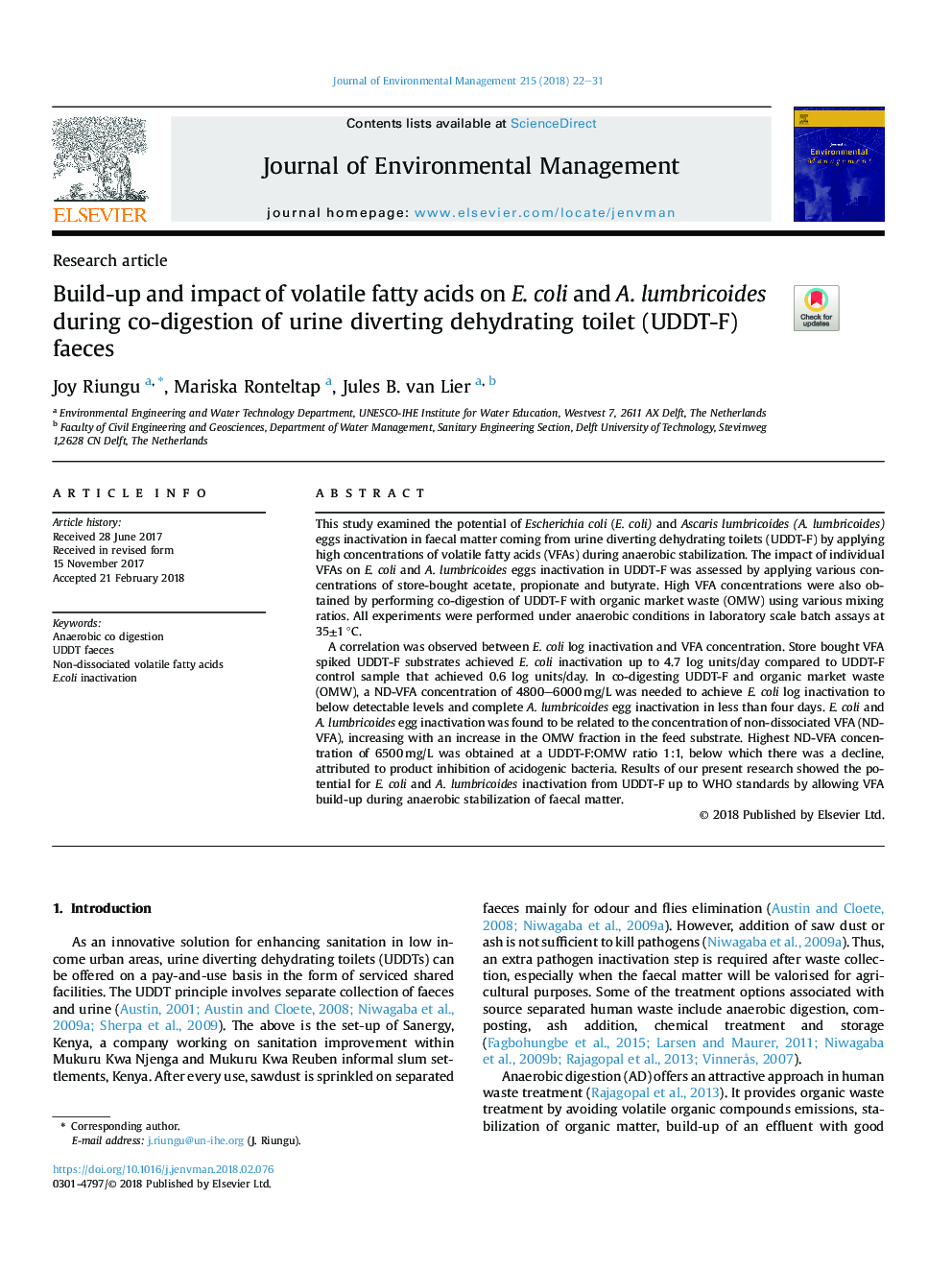| Article ID | Journal | Published Year | Pages | File Type |
|---|---|---|---|---|
| 7477409 | Journal of Environmental Management | 2018 | 10 Pages |
Abstract
A correlation was observed between E. coli log inactivation and VFA concentration. Store bought VFA spiked UDDT-F substrates achieved E. coli inactivation up to 4.7 log units/day compared to UDDT-F control sample that achieved 0.6 log units/day. In co-digesting UDDT-F and organic market waste (OMW), a ND-VFA concentration of 4800-6000â¯mg/L was needed to achieve E. coli log inactivation to below detectable levels and complete A. lumbricoides egg inactivation in less than four days. E. coli and A. lumbricoides egg inactivation was found to be related to the concentration of non-dissociated VFA (ND-VFA), increasing with an increase in the OMW fraction in the feed substrate. Highest ND-VFA concentration of 6500â¯mg/L was obtained at a UDDT-F:OMW ratio 1:1, below which there was a decline, attributed to product inhibition of acidogenic bacteria. Results of our present research showed the potential for E. coli and A. lumbricoides inactivation from UDDT-F up to WHO standards by allowing VFA build-up during anaerobic stabilization of faecal matter.
Related Topics
Physical Sciences and Engineering
Energy
Renewable Energy, Sustainability and the Environment
Authors
Joy Riungu, Mariska Ronteltap, Jules B. van Lier,
